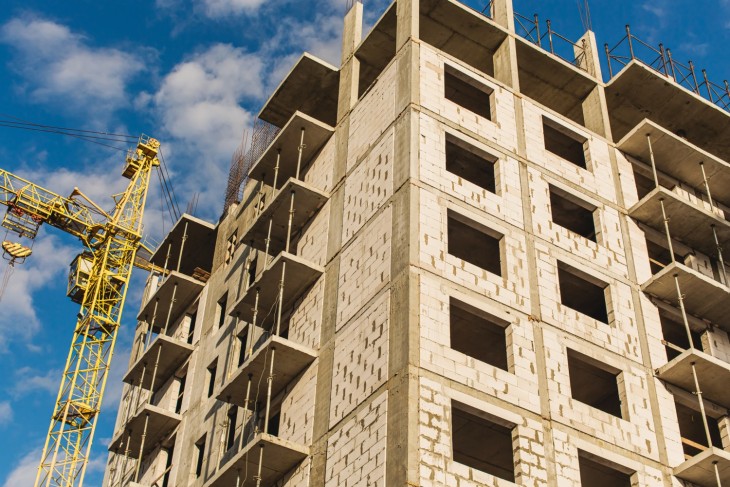
In the relentless pursuit of modernity, cities worldwide have witnessed the rise of so-called architectural marvels in the form of sleek apartment buildings and commercial structures. Many are often celebrated for their avant-garde designs and state-of-the-art amenities, but they are not immune to criticism and need improvement. This is about wanting our local and state governments to require better-balanced and open space design with the same vigor and enthusiasm as their mandated increased density to better serve the community at large and the increased impacts on the surrounding environment.
In its infinite wisdom, the State of California has ordained that these developments are the best way to serve our future housing and mixed-use commercial needs. Many are convinced that these projects represent enlightened progress, implemented in the name of social and economic diversity, and are the solution to our State’s growth requirements and demands. But beyond the myopic pursuit of these futuristic homogenous developments, with their similar shapes and shiny facades, lies a dark shadow of adverse effects and compromises, including, in some cases, excessive builder and developer profits. Unfortunately, greed, like a weed, finds its way to root in the cracks of our troubled bureaucratic system, but today, we are going to focus on the design and build part of the equation.
Urban landscapes, including our beautiful beach city of Santa Monica, have recently witnessed a proliferation of both completed and planned large, monolithic buildings that mostly lack original and creative inspiration or character and not only fail to provide a more livable environment by integrating with their surroundings but are in stark contrast; it’s like a visual war of design in contradiction to what made our city unique, to begin with. By prioritizing standardized designs that could belong to any city or country, specifically in our City of Santa Monica, these buildings are missing our beachfront location’s distinctive character and history. As a result, these “Cookie Cutter” projects create indistinguishable neighborhoods and surrounding commercial centers, losing any opportunity for local individualism. Preserving, integrating, and creatively celebrating local architectural styles and traditions in new buildings enriches our unique environment, creates higher property values, and strengthens a sense of community pride and identity.
Many new and proposed developments prioritize density, functionality, and cost-efficiency over creative, attractive aesthetics and human-centric design. While, at first glance, some of these projects may appear to exude an aura of luxury, the reality is far from glamorous. Yes, they may provide “cost-effective” housing and commercial solutions on paper, squeezing out more profits for investors in the short run, but at the typical 90% market rate to 10% ‘affordable’ ratio, this is hardly resolving the need for affordable housing. Still, they are getting built, and it is imperative that the long-term effects on individuals and communities be balanced and environmentally responsible, especially for larger development projects! The monotone stacked and then modified cookie-cutter approach strips away neighborhoods’ unique identity. Also, the glossy veneers often used in these buildings can mask underlying issues such as poor building quality, including but not limited to insufficient soundproofing and lack of adequate sunlight. Let’s also not forget the scarcity of true, usable, larger outdoor rest, play, and open areas.
So, in the new world vision unfolding before us, residents are becoming mere tenants in a modern sea of virtually identical units, mostly disconnected from each other except by the internet. This loss of community fabric has been shown to diminish social interactions and contribute to feelings of alienation, isolation, and depression among residents and society in general, which can affect productivity and creativity.
The opportunity and respect for prioritizing the importance of creating inspirational spaces with warm and inviting architectural design, including interiors using materials that foster a feeling of well-being and a sense of place, is becoming lost and even ignored by both government and many large developers and, sadly, their architects bend the knee to their corporate and investor profitability motives and agenda instead of standing firmly by better design and ethical principles. With respect to higher cost concerns, it is unfortunate that many developers either don’t care to realize or even understand that with specific creative improvements, materials, and unique innovations incorporating more light, space per unit, and much larger usable green open spaces, for example, the value of these structures will grow more over time in numerous ways to be appreciated by generations to come. A relatively small short-term sacrifice will abundantly return more over time if done correctly, and that’s the magic that a good planner and architect can bring to the table.
Architects and Urban planners, in conjunction with Developers, must prioritize human-centric design principles and create spaces that inspire connection, well-being, and a sense of belonging. Only by embracing this approach to planning and architecture can we build communities that enrich the lives of all residents. By doing so, we can make cities that evolve to be not only functional and efficient but also vibrant, creative, positive, and soulful—a city not only for living in but one you would want to visit.
Send comments to santamonicasmart@gmail.com
By Michael Jolly
S.M.a.r.t Santa Monica Architects for a Responsible Tomorrow
Thane Roberts, Architect; Mario Fonda-Bonardi AIA; Robert H. Taylor AIA, Architect; Dan Jansenson, Architect & Building and Fire-Life Safety Commission; Samuel Tolkin, Architect & Planning Commissioner; Michael Jolly AIR-CRE, Marie Standing; Jack Hillbrand AIA












